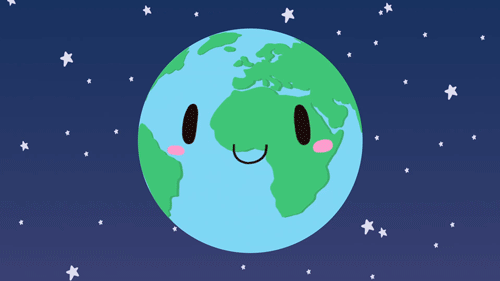Dive into your creative stream
Mercury - Blog Posts
Astro observations focusing on the voice and mercury
I dont know why but mars in the 8th house? Especially since when I think of mars I don't think of voice but I've noticed hot voices with this placement specifically it being deep but idk maybe it's another placement?
Taurus mercury or mars- deep voice or pretty melanie Martinez is a Taurus mercury!
Cancer mercury, very soothing
Libra mercury- there was a guy I knew with this placement and his voice was so hot!!! My friend told me and I literally joined a gc because of him. His voice was deep and he could change it a lot. He also had it in his 3rd house.
Venus in the 3rd house idk they just have an attractive voice to me
Mercury- Neptune aspects struggle to think, the type to forget what they were gonna say. People might see them as liars or think they're lying even when they're not. They might even lie without trying it just comes out.
Capricorn Mercury's, Capricorn/Saturn in the 3rd house, and Saturn-mercury aspects might sound proper, nerdy, or monotone. I have capricorn in the 3rd house and people have told me I talk white (ik how ignorant 💀).

Idk if I'm completely satisfied with this post but I told myself I'd post it so I might keep adding to it if I have more observations.
Another wonderful drawing by my girl @lunan95. I love it and I thank you for it girl!
I can see the Lightning half feeling taller (Fusion heights vary but still)! I’m thinking taller than Garnet, but shorter than Sardonyx and Sugilite.
I can see them using Lightning’s shield like a frisbee at enemy to cut through them or friends in their off time.

Behold! Green Banded Agate!
This is the fusion between Lightning (Carnelian) and Sky (Larimar)! Oh, I’m so proud of this piece, I have worked 3 hours and 30 minutes with this! All this while listening to Steven Universe soundtrack
(”Enticement” score, I had to confess…)
I don’t know if this is a male or female, to be honest…maybe just genderless. Anyways, Green-Banded is a cutie with a mix of both the ever so cheeky and cute Sky and the fierce and confident Lightning!
@pixarjem I hope you’re proud of me! :D
Absolutely WONDERFUL drawing/fan art/Gem-ification by @lunan95 for our group/ possible story of Cars!Gems.
Wonderful dress for Sky/Larimar.
Larimar is the Gem and her name before joining where she gives herself a new name.
Will you join the Rebellion? @crystalgemcars
Ideas are welcome.


Okay, now I have done a couple of more gemsonas!
First one out is Sky, who belongs to me. :3 Sky is a Larimar, a rare gem and she belonged originally to Blue Diamond’s court. A misunderstanding occurs during the rebellion and Sky got separated from the Homeworld Gems, causing her gem to crack and she were left alone at Earth where she wanders around lost, helpless and without access to her gem abilities.
Second one is no one else than Chick Hicks! He’s is a Moss Agate, a Quartz soldier like Lightning/Carnelian, only he’s one of the ultimate Quartz soldiers which means his creation is perfected and he belongs to Yellow Diamond. I have ways pictured Chick being a lot like Jasper from the actual show and my friend/co-writer @pixarjem agreed withy opinion.

Welp, here she is. The acid spitting monster

02.04 was the birthday of the cute artist omg3seitaikenjidai3) Unfortunately, I could not finish on time) But I hope you'll like it!

Planet people
Mercury stained my soul the way only my bones can know...
Or my skin

(this was just after the tattoo was done in October... It's still gorgeous)
And I have another one of Mercury Act I album picture, but it's hard to take it behind my arm 😅

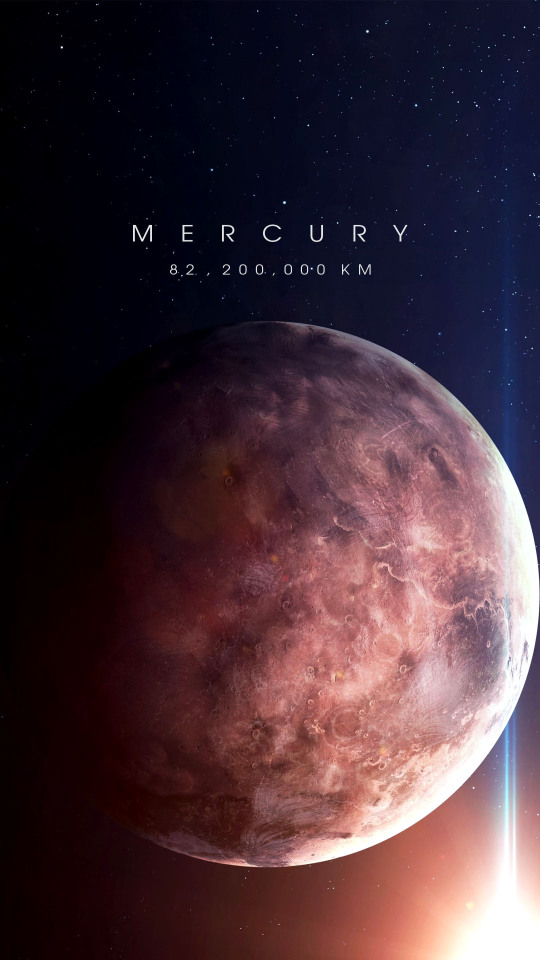



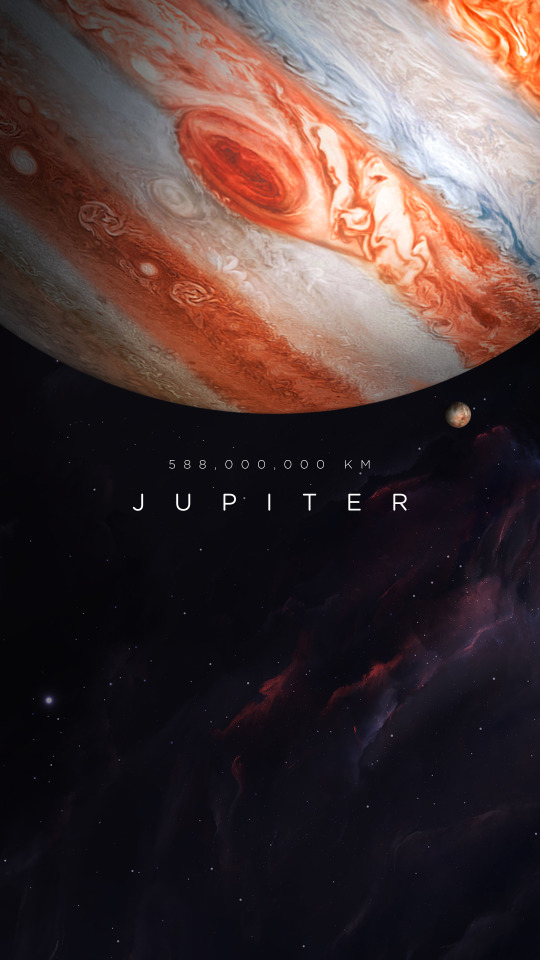
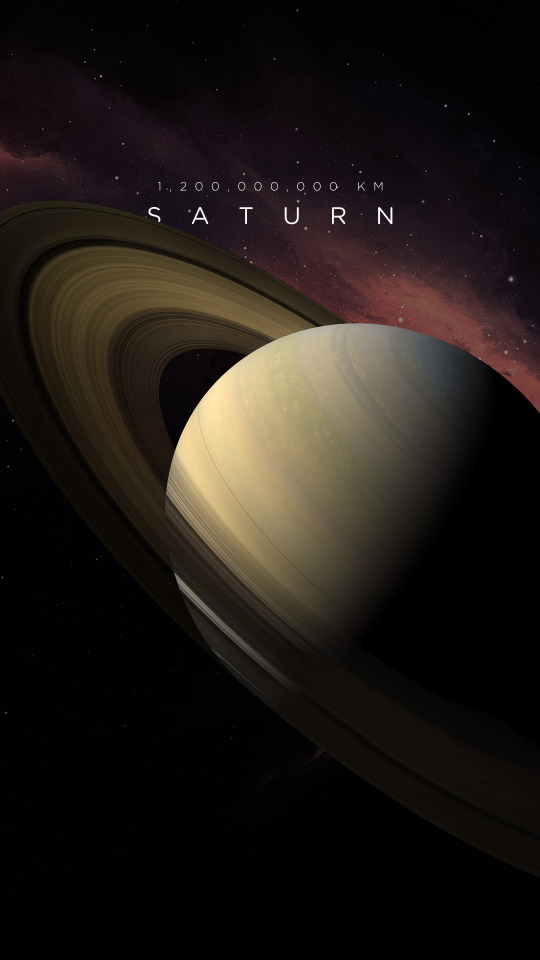
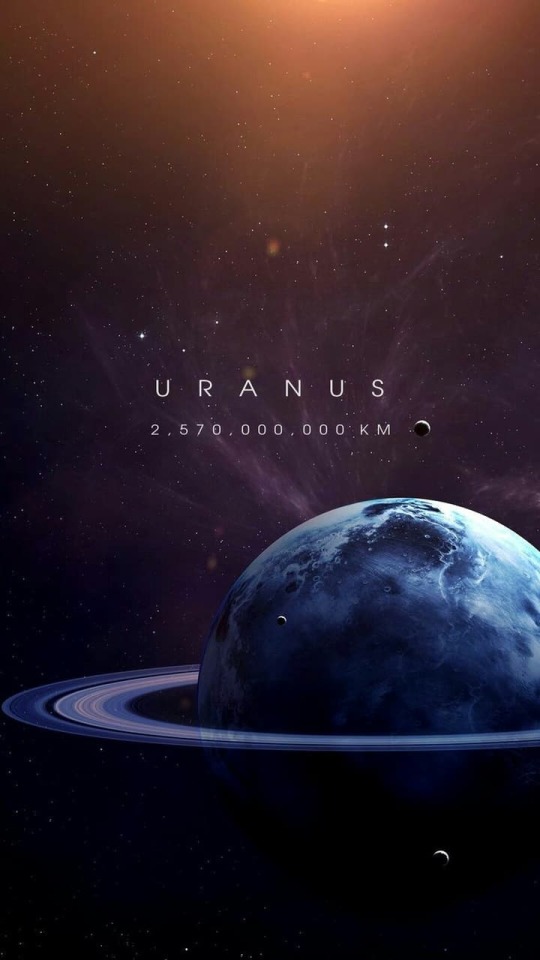

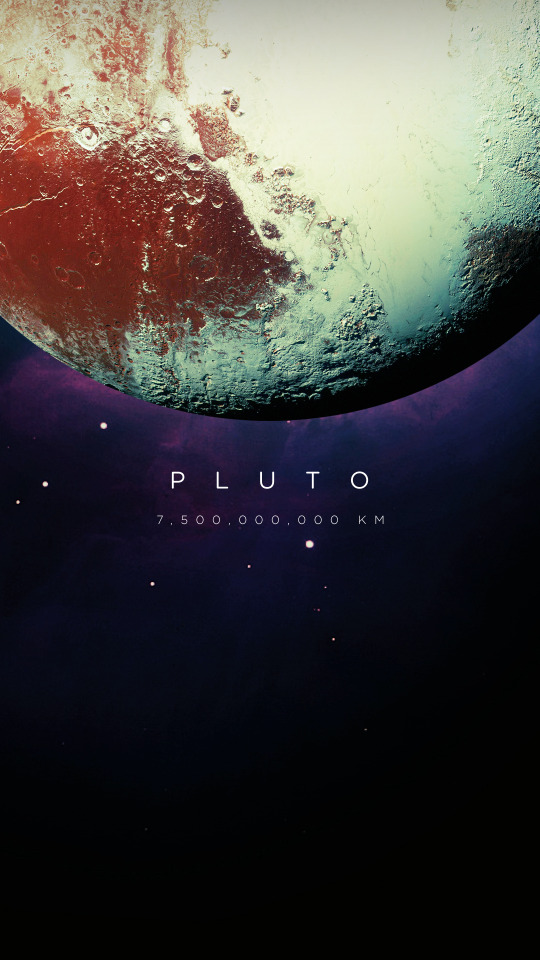
Our Amazing Solar System
Watch Mercury Transit the Sun on Nov. 11
On Nov. 11, Earthlings will be treated to a rare cosmic event — a Mercury transit.

For about five and a half hours on Monday, Nov. 11 — from about 7:35 a.m. EST to 1:04 p.m. EST — Mercury will be visible from Earth as a tiny black dot crawling across the face of the Sun. This is a transit and it happens when Mercury lines up just right between the Sun and Earth.
Mercury transits happen about 13 times a century. Though it takes Mercury only about 88 days to zip around the Sun, its orbit is tilted, so it's relatively rare for the Sun, Mercury and Earth to line up perfectly. The next Mercury transit isn't until 2032 — and in the U.S., the next opportunity to catch a Mercury transit is in 2049!
How to watch
Our Solar Dynamics Observatory satellite, or SDO, will provide near-real time views of the transit. SDO keeps a constant eye on the Sun from its position in orbit around Earth to monitor and study the Sun's changes, putting it in the front row for many eclipses and transits.
Visit mercurytransit.gsfc.nasa.gov to tune in!

Our Solar Dynamics Observatory also saw Mercury transit the Sun in 2016.
If you're thinking of watching the transit from the ground, keep in mind that it is never safe to look directly at the Sun. Even with solar viewing glasses, Mercury is too small to be easily seen with the unaided eye. Your local astronomy club may have an opportunity to see the transit using specialized, properly-filtered solar telescopes — but remember that you cannot use a regular telescope or binoculars in conjunction with solar viewing glasses.
Transits in other star systems
Transiting planets outside our solar system are a key part of how we look for exoplanets.
Our Transiting Exoplanet Survey Satellite, or TESS, is NASA’s latest planet-hunter, observing the sky for new worlds in our cosmic neighborhood. TESS searches for these exoplanets, planets orbiting other stars, by using its four cameras to scan nearly the whole sky one section at a time. It monitors the brightness of stars for periodic dips caused by planets transiting those stars.

This is similar to Mercury’s transit across the Sun, but light-years away in other solar systems! So far, TESS has discovered 29 confirmed exoplanets using transits — with over 1,000 more candidates being studied by scientists!

Discover more transit and eclipse science at nasa.gov/transit, and tune in on Monday, Nov. 11, at mercurytransit.gsfc.nasa.gov.
Make sure to follow us on Tumblr for your regular dose of space: http://nasa.tumblr.com.
A Tour of Storms Across the Solar System

Earth is a dynamic and stormy planet with everything from brief, rumbling thunderstorms to enormous, raging hurricanes, which are some of the most powerful and destructive storms on our world. But other planets also have storm clouds, lightning — even rain, of sorts. Let’s take a tour of some of the unusual storms in our solar system and beyond.
Tune in May 22 at 3 p.m. for more solar system forecasting with NASA Chief Scientist Jim Green during the latest installment of NASA Science Live: https://www.nasa.gov/nasasciencelive.

1. At Mercury: A Chance of Morning Micrometeoroid Showers and Magnetic ‘Tornadoes’
Mercury, the planet nearest the Sun, is scorching hot, with daytime temperatures of more than 800 degrees Fahrenheit (about 450 degrees Celsius). It also has weak gravity — only about 38% of Earth's — making it hard for Mercury to hold on to an atmosphere.
Its barely there atmosphere means Mercury doesn’t have dramatic storms, but it does have a strange "weather" pattern of sorts: it’s blasted with micrometeoroids, or tiny dust particles, usually in the morning. It also has magnetic “tornadoes” — twisted bundles of magnetic fields that connect the planet’s magnetic field to space.

2. At Venus: Earth’s ‘Almost’ Twin is a Hot Mess
Venus is often called Earth's twin because the two planets are similar in size and structure. But Venus is the hottest planet in our solar system, roasting at more than 800 degrees Fahrenheit (430 degrees Celsius) under a suffocating blanket of sulfuric acid clouds and a crushing atmosphere. Add to that the fact that Venus has lightning, maybe even more than Earth.
In visible light, Venus appears bright yellowish-white because of its clouds. Earlier this year, Japanese researchers found a giant streak-like structure in the clouds based on observations by the Akatsuki spacecraft orbiting Venus.

3. At Earth: Multiple Storm Hazards Likely
Earth has lots of storms, including thunderstorms, blizzards and tornadoes. Tornadoes can pack winds over 300 miles per hour (480 kilometers per hour) and can cause intense localized damage.
But no storms match hurricanes in size and scale of devastation. Hurricanes, also called typhoons or cyclones, can last for days and have strong winds extending outward for 675 miles (1,100 kilometers). They can annihilate coastal areas and cause damage far inland.

4. At Mars: Hazy with a Chance of Dust Storms
Mars is infamous for intense dust storms, including some that grow to encircle the planet. In 2018, a global dust storm blanketed NASA's record-setting Opportunity rover, ending the mission after 15 years on the surface.
Mars has a thin atmosphere of mostly carbon dioxide. To the human eye, the sky would appear hazy and reddish or butterscotch colored because of all the dust suspended in the air.

5. At Jupiter: A Shrinking Icon
It’s one of the best-known storms in the solar system: Jupiter’s Great Red Spot. It’s raged for at least 300 years and was once big enough to swallow Earth with room to spare. But it’s been shrinking for a century and a half. Nobody knows for sure, but it's possible the Great Red Spot could eventually disappear.

6. At Saturn: A Storm Chasers Paradise
Saturn has one of the most extraordinary atmospheric features in the solar system: a hexagon-shaped cloud pattern at its north pole. The hexagon is a six-sided jet stream with 200-mile-per-hour winds (about 322 kilometers per hour). Each side is a bit wider than Earth and multiple Earths could fit inside. In the middle of the hexagon is what looks like a cosmic belly button, but it’s actually a huge vortex that looks like a hurricane.
Storm chasers would have a field day on Saturn. Part of the southern hemisphere was dubbed "Storm Alley" by scientists on NASA's Cassini mission because of the frequent storm activity the spacecraft observed there.

7. At Titan: Methane Rain and Dust Storms
Earth isn’t the only world in our solar system with bodies of liquid on its surface. Saturn’s moon Titan has rivers, lakes and large seas. It’s the only other world with a cycle of liquids like Earth’s water cycle, with rain falling from clouds, flowing across the surface, filling lakes and seas and evaporating back into the sky. But on Titan, the rain, rivers and seas are made of methane instead of water.
Data from the Cassini spacecraft also revealed what appear to be giant dust storms in Titan’s equatorial regions, making Titan the third solar system body, in addition to Earth and Mars, where dust storms have been observed.

8. At Uranus: A Polar Storm
Scientists were trying to solve a puzzle about clouds on the ice giant planet: What were they made of? When Voyager 2 flew by in 1986, it spotted few clouds. (This was due in part to the thick haze that envelops the planet, as well as Voyager's cameras not being designed to peer through the haze in infrared light.) But in 2018, NASA’s Hubble Space Telescope snapped an image showing a vast, bright, stormy cloud cap across the north pole of Uranus.

9. At Neptune: Methane Clouds
Neptune is our solar system's windiest world. Winds whip clouds of frozen methane across the ice giant planet at speeds of more than 1,200 miles per hour (2,000 kilometers per hour) — about nine times faster than winds on Earth.
Neptune also has huge storm systems. In 1989, NASA’s Voyager 2 spotted two giant storms on Neptune as the spacecraft zipped by the planet. Scientists named the storms “The Great Dark Spot” and “Dark Spot 2.”

10. It’s Not Just Us: Extreme Weather in Another Solar System
Scientists using NASA’s Hubble Space Telescope made a global map of the glow from a turbulent planet outside our solar system. The observations show the exoplanet, called WASP-43b, is a world of extremes. It has winds that howl at the speed of sound, from a 3,000-degree-Fahrenheit (1,600-degree-Celsius) day side, to a pitch-black night side where temperatures plunge below 1,000 degrees Fahrenheit (500 degrees Celsius).
Discovered in 2011, WASP-43b is located 260 light-years away. The planet is too distant to be photographed, but astronomers detected it by observing dips in the light of its parent star as the planet passes in front of it.
Make sure to follow us on Tumblr for your regular dose of space: http://nasa.tumblr.com.
Greatest Hits — Craters We Love
Our solar system was built on impacts — some big, some small — some fast, some slow. This week, in honor of a possible newly-discovered large crater here on Earth, here’s a quick run through of some of the more intriguing impacts across our solar system.
1. Mercury: A Basin Bigger Than Texas

Mercury does not have a thick atmosphere to protect it from space debris. The small planet is riddled with craters, but none as spectacular as the Caloris Basin. “Basin” is what geologists call craters larger than about 186 miles (300 kilometers) in diameter. Caloris is about 950 miles (1,525 kilometers) across and is ringed by mile-high mountains.
For scale, the state of Texas is 773 miles (1,244 kilometers) wide from east to west.
2. Venus: Tough on Space Rocks

Venus’ ultra-thick atmosphere finishes off most meteors before they reach the surface. The planet’s volcanic history has erased many of its craters, but like almost any place with solid ground in our solar system, there are still impact scars to be found. Most of what we know of Venus’ craters comes from radar images provided by orbiting spacecraft, such as NASA’s Magellan.
Mead Crater is the largest known impact site on Venus. It is about 170 miles (275 kilometers) in diameter. The relatively-flat, brighter inner floor of the crater indicates it was filled with impact melt and/or lava.
3. Earth: Still Craters After All These Years

Evidence of really big impacts — such as Arizona’s Meteor Crater — are harder to find on Earth. The impact history of our home world has largely been erased by weather and water or buried under lava, rock or ice. Nonetheless, we still find new giant craters occasionally.
A NASA glaciologist has discovered a possible impact crater buried under more than a mile of ice in northwest Greenland.
This follows the finding, announced in November 2018, of a 19-mile (31-kilometer) wide crater beneath Hiawatha Glacier – the first meteorite impact crater ever discovered under Earth’s ice sheets.
If the second crater, which has a width of over 22 miles (35 kilometers), is ultimately confirmed as the result of a meteorite impact, it will be the 22nd largest impact crater found on Earth.
4. Moon: Our Cratered Companion

Want to imagine what Earth might look like without its protective atmosphere, weather, water and other crater-erasing features? Look up at the Moon. The Moon’s pockmarked face offers what may be humanity’s most familiar view of impact craters.
One of the easiest to spot is Tycho, the tight circle and bright, radiating splat are easy slightly off center on the lower-left side of the full moon. Closer views of the 53-mile (85 kilometer)-wide crater from orbiting spacecraft reveal a beautiful central peak, topped with an intriguing boulder that would fill about half of a typical city block.
5. Mars: Still Taking Hits

Mars has just enough atmosphere to ensure nail-biting spacecraft landings, but not enough to prevent regular hits from falling space rocks. This dark splat on the Martian south pole is less than a year old, having formed between July and September 2018. The two-toned blast pattern tells a geologic story. The larger, lighter-colored blast pattern could be the result of scouring by winds from the impact shockwave on ice. The darker-colored inner blast pattern is because the impactor penetrated the thin ice layer, blasting the dark sand underneath in all directions.
6. Ceres: What Lies Beneath

The bright spots in Ceres’ Occator crater intrigued the world from the moment the approaching Dawn spacecraft first photographed it in 2015. Closer inspection from orbit revealed the spots to be the most visible example of hundreds of bright, salty deposits that decorate the dwarf planet like a smattering of diamonds. The science behind these bright spots is even more compelling: they are mainly sodium carbonate and ammonium chloride that somehow made their way to the surface in a slushy brine from within or below the crust. Thanks to Dawn, scientists have a better sense of how these reflective areas formed and changed over time — processes indicative of an active, evolving world.
7. Comet Tempel 1: We Did It!

Scientists have long known we can learn a lot from impact craters — so, in 2005, they made one themselves and watched it happen.
On July 4, 2005, NASA’s Deep Impact spacecraft trained its instruments on an 816-pound (370-kilogram) copper impactor as it smashed into comet Tempel 1.
One of the more surprising findings: The comet has a loose, “fluffy” structure, held together by gravity and contains a surprising amount of organic compounds that are part of the basic building blocks of life.
8. Mimas: May the 4th Be With You

Few Star Wars fans — us included — can resist Obi Wan Kenobi's memorable line “That’s no moon…” when images of Saturn’s moon Mimas pop up on a screen. Despite its Death Star-like appearance, Mimas is most definitely a moon. Our Cassini spacecraft checked, a lot — and the superlaser-looking depression is simply an 81-mile (130-kilometer) wide crater named for the moon’s discoverer, William Herschel.
9. Europa: Say What?

The Welsh name of this crater on Jupiter’s ocean moon Europa looks like a tongue-twister, but it is easiest pronounced as “pool.” Pwyll is thought to be one of the youngest features we know of on Europa. The bright splat from the impact extends more than 600 miles (about 1,000 kilometers) around the crater, a fresh blanket over rugged, older terrain. “Fresh,” or young, is a relative term in geology; the crater and its rays are likely millions of years old.
10. Show Us Your Greatest Hits

Got a passion for Stickney, the dominant bowl-shaped crater on one end of Mars’ moon Phobos? Or a fondness for the sponge-like abundance of impacts on Saturn’s battered moon Hyperion (pictured)? There are countless craters to choose from. Share your favorites with us on Twitter, Instagram and Facebook.
Make sure to follow us on Tumblr for your regular dose of space: http://nasa.tumblr.com
What’s Up - March 2018
What’s Up For March?
Several Planets and the Zodiacal Light!

This month, at sunset, catch elusive Mercury, bright Venus, the Zodiacal Light, Mars, Saturn and Jupiter between midnight and dawn!

Both Venus and Mercury play the part of "evening stars" this month. At the beginning of the month they appear low on the western horizon.

The Moon itself joins the pair from March 18th through the 20th.

The Moon skims by the Pleiades star cluster and Taurus's bright red star Aldebaran on the next few evenings, March 21 through the 23rd.

Jupiter, king of the planets, rises just before midnight this month and earlier by month end.

Even through the smallest telescope or average binoculars, you should see the 4 Galilean moons, Europa, Io, Callisto and Ganymede.

The March morning sky offers dazzling views of Mars and Saturn all month long.

Through a telescope, you can almost make out some of the surface features on Mars.

Look a little farther into Mars' future and circle May 5th with a red marker. When our InSight spacecraft launches for its 6 month journey to the Red Planet, Mars will be easily visible to your unaided eye.

Keep watching Mars as it travels closer to Earth. It will be closest in late July, when the red planet will appear larger in apparent diameter than it has since 2003!

You are in for a real treat if you can get away to a dark sky location on a moonless night this month -- the Zodiacal Light and the Milky Way intersect!

The Zodiacal light is a faint triangular glow seen from a dark sky just after sunset in the spring or just before sunrise in the fall.

The more familiar Milky Way is one of the spiral arms of our galaxy.

What we're seeing is sunlight reflecting off dust grains that circle the Sun in the inner solar system. These dust grains journey across our sky in the ecliptic, the same plane as the Moon and the planets.
Watch the full What’s Up for March Video:
There are so many sights to see in the sky. To stay informed, subscribe to our What’s Up video series on Facebook. Make sure to follow us on Tumblr for your regular dose of space: http://nasa.tumblr.com.
Magnetospheres: How Do They Work?
The sun, Earth, and many other planets are surrounded by giant magnetic bubbles.

Space may seem empty, but it’s actually a dynamic place, dominated by invisible forces, including those created by magnetic fields. Magnetospheres – the areas around planets and stars dominated by their magnetic fields – are found throughout our solar system. They deflect high-energy, charged particles called cosmic rays that are mostly spewed out by the sun, but can also come from interstellar space. Along with atmospheres, they help protect the planets’ surfaces from this harmful radiation.
It’s possible that Earth’s protective magnetosphere was essential for the development of conditions friendly to life, so finding magnetospheres around other planets is a big step toward determining if they could support life.
But not all magnetospheres are created equal – even in our own backyard, not all planets in our solar system have a magnetic field, and the ones we have observed are all surprisingly different.

Earth’s magnetosphere is created by the constantly moving molten metal inside Earth. This invisible “force field” around our planet has an ice cream cone-like shape, with a rounded front and a long, trailing tail that faces away from the sun. The magnetosphere is shaped that way because of the constant pressure from the solar wind and magnetic fields on the sun-facing side.

Earth’s magnetosphere deflects most charged particles away from our planet – but some do become trapped in the magnetic field and create auroras when they rain down into the atmosphere.

We have several missions that study Earth’s magnetosphere – including the Magnetospheric Multiscale mission, Van Allen Probes, and Time History of Events and Macroscale Interactions during Substorms (also known as THEMIS) – along with a host of other satellites that study other aspects of the sun-Earth connection.


Mercury, with a substantial iron-rich core, has a magnetic field that is only about 1% as strong as Earth’s. It is thought that the planet’s magnetosphere is stifled by the intense solar wind, limiting its strength, although even without this effect, it still would not be as strong as Earth’s. The MESSENGER satellite orbited Mercury from 2011 to 2015, helping us understand our tiny terrestrial neighbor.


After the sun, Jupiter has by far the biggest magnetosphere in our solar system – it stretches about 12 million miles from east to west, almost 15 times the width of the sun. (Earth’s, on the other hand, could easily fit inside the sun.) Jupiter does not have a molten metal core like Earth; instead, its magnetic field is created by a core of compressed liquid metallic hydrogen.

One of Jupiter’s moons, Io, has intense volcanic activity that spews particles into Jupiter’s magnetosphere. These particles create intense radiation belts and the large auroras around Jupiter’s poles.

Ganymede, Jupiter’s largest moon, also has its own magnetic field and magnetosphere – making it the only moon with one. Its weak field, nestled in Jupiter’s enormous shell, scarcely ruffles the planet’s magnetic field.
Our Juno mission orbits inside the Jovian magnetosphere sending back observations so we can better understand this region. Previous observations have been received from Pioneers 10 and 11, Voyagers 1 and 2, Ulysses, Galileo and Cassini in their flybys and orbits around Jupiter.

Saturn’s moon Enceladus transforms the shape of its magnetosphere. Active geysers on the moon’s south pole eject oxygen and water molecules into the space around the planet. These particles, much like Io’s volcanic emissions at Jupiter, generate the auroras around the planet’s poles. Our Cassini mission studies Saturn’s magnetic field and auroras, as well as its moon Enceladus.


Uranus’ magnetosphere wasn't discovered until 1986 when data from Voyager 2’s flyby revealed weak, variable radio emissions. Uranus’ magnetic field and rotation axis are out of alignment by 59 degrees, unlike Earth’s, whose magnetic field and rotation axis differ by only 11 degrees. On top of that, the magnetic field axis does not go through the center of the planet, so the strength of the magnetic field varies dramatically across the surface. This misalignment also means that Uranus’ magnetotail – the part of the magnetosphere that trails away from the sun – is twisted into a long corkscrew.


Neptune’s magnetosphere is also tilted from its rotation axis, but only by 47. Just like on Uranus, Neptune’s magnetic field strength varies across the planet. This also means that auroras can be seen away from the planet’s poles – not just at high latitudes, like on Earth, Jupiter and Saturn.

Does Every Planet Have a Magnetosphere?
Neither Venus nor Mars have global magnetic fields, although the interaction of the solar wind with their atmospheres does produce what scientists call an “induced magnetosphere.” Around these planets, the atmosphere deflects the solar wind particles, causing the solar wind’s magnetic field to wrap around the planet in a shape similar to Earth’s magnetosphere.

What About Beyond Our Solar System?
Outside of our solar system, auroras, which indicate the presence of a magnetosphere, have been spotted on brown dwarfs – objects that are bigger than planets but smaller than stars.
There’s also evidence to suggest that some giant exoplanets have magnetospheres. As scientists now believe that Earth’s protective magnetosphere was essential for the development of conditions friendly to life, finding magnetospheres around exoplanets is a big step in finding habitable worlds.
Make sure to follow us on Tumblr for your regular dose of space: http://nasa.tumblr.com
What’s Up for May?
This month, Jupiter is well placed for evening viewing, Saturn rises before midnight and the moon dances with Venus, Mercury and Mars.

Jupiter climbs higher in the southeast sky earlier in the evening this month, instead of having to wait until midnight for the planet to make an appearance. You can even see with just a pair of binoculars--even the four Galilean moon!

You can even see with just a pair of binoculars--even Io, Europa, Ganymede and Callisto--the four Galilean moons--as they change position each night!

Our moon appears near Jupiter in the nighttime sky from May 5-8.

The moon joins Venus and Mercury in the eastern sky just before sunrise on May 22 and May 23.

Later in the month, our moon pairs up with Mars in the west-northwest sky on May 26.

Saturn will be visible before midnight in early May, rising about 11:30 p.m. and by 9:30 p.m. later in the month. The best time to see Saturn Saturn is when it’s higher in the sky after midnight near the end of the month.

Using a telescope, you may be able to see Saturn’s cloud bands, or even a glimpse of Saturn’s north polar region--views that were beautifully captured by our Cassini spacecraft.

Watch the full video:
Follow us on Tumblr for your regular dose of space: http://nasa.tumblr.com
Solar System: 10 Things to Know This Week
State of the Solar System: 10 quick updates from around our galactic neighborhood.
1. Powered by the Sun

Fifty-nine years ago, Vanguard 1 launched to demonstrate a new spacecraft technology – solar power. We’ve been going farther and for longer ever since.
+More on Vanguard 1
2. Mapping Mercury

A big week in history for exploration of the innermost planet. On March 16, 1975, our Mariner 10 made its third and final flyby of Mercury. One day and 36 years later, MESSENGER became the first spacecraft to orbit Mercury. Next up: ESA’s BepiColumbo, undergoing testing now, is set to launch for Mercury in 2018.
+Missions to Mercury
3. Return to Venus

U.S. and Russian scientists are discussing a planned revival of the successful Venera program that revealed much about Venus in the 1960s, 70s and 80s. Meanwhile, Japan’s Akatsuki orbiter continues to study our sister planet.
+More on Venera-D
4. Rocket Power

Back on Earth 91 years ago (March 16, 1926), inventor and dreamer Robet Goddard changed the world forever with the first test of a liquid-fueled rocket. We’ve been going farther and faster ever since.
+More on Goddard
5. Moon Watch

Our Lunar Reconnaissance Orbiter (LRO) has been sending a steady stream of high-resolution images back to Earth for more than seven years.
+More on LRO
6. Busy Mars

There are currently five orbiters (Mars Reconnaissance Orbiter, Mars Odyssey, MAVEN, ESA’s Mars Express and India’s Mars Orbiter Mission) and two rovers (Curiosity and Opportunity) exploring Mars, making it second only to Earth in the number of robotic spacecraft studying its secrets.
+Meet the Mars Fleet
7. Vote for Jupiter

Polls close today (March 20) so vote not to point a real spacecraft camera at Jupiter during the mission’s 5th perijove pass.
+Vote now
8. Science to the Last Second

In a little less than six months, our Cassini orbiter will plunge into Saturn as a spectacular finale to its 19-year mission – but not before it embarks on a completely new mission into unexplored space between Saturn and its mighty rings.
+More on Cassini’s Grand Finale
9. By George?

Happy belated birthday to Uranus, discovered on March 13, 1781 by William Herschel. The English astronomer wanted to name his discovery – the first planet discovered in recorded history – “Georgium Sidus” after England’s King George III. But he was overruled, and astronomer stuck with traditional mythological names – creating an opportunity for 263 years of student jokes at the expense of the ice giant planet’s name.
+More on Uranus
10. Go Farther

The round trip light time from Voyager 1 to Earth is more than 38 hours. Voyager 1 is almost 13 billion miles from our home planet.
+More on Voyager
Discover more lists of 10 things to know about our solar system HERE.
Make sure to follow us on Tumblr for your regular dose of space: http://nasa.tumblr.com
What’s Up for March 2017?
What’s Up for March? The moon hides red star Aldebaran and crescents dazzle after dusk.

On March 4 the first quarter moon passes between Earth and the star Aldebaran, temporarily blocking our view of the star. This is called an occultation.

The occultation begins and concludes at different times, depending on where you are when you view it.

The event should be easy to see from most of the U.S., Mexico, most of Central America, the Western Caribbean and Bermuda.

Observers along a narrow path from Vancouver, British Columbia, to Hartford, Connecticut, will see the moon “graze” the star. The star will disappear and reappear repeatedly as hills and valleys on the moon alternately obscure and reveal it.

As seen from Earth, both Mercury and Venus have phases like our moon. That’s because they circle the sun inside Earth’s orbit.

Planets that orbit between Earth and the sun are known as inner or inferior planets.

Inferior planets can never be at “opposition,” which is when the planet and the sun are on opposite sides of Earth.

But inferior planets can be at “conjunction,” which is when a planet, the sun and Earth are all in a straight line.

Conjunction can happen once when the planet is on the opposite side of the sun from Earth and again when it’s on the same side of the sun as Earth.

When a planet is on the opposite side of the sun from Earth, we say it is at “superior conjunction.” As the planet moves out from behind the sun and gets closer to Earth, we see less and less of the lit side. We see phases, similar to our moon’s phases.

Mercury is at superior conjunction on March 6.

A few weeks later, the planet emerges from behind the sun and we can once again observe it. By the end of March we’ll see a last-quarter Mercury.

On April 20 Mercury reaches “inferior conjunction.”

Brilliant Venus is also racing toward its own inferior conjunction on March 25. Watch its crescent get thinner and thinner as the planet’s size appears larger and larger, because it is getting closer to Earth.

Finally, look for Jupiter to rise in the East. It will be visible all month long from late evening until dawn.

You can catch up on solar system missions and all of our missions at www.nasa.gov
Watch the full “What’s Up for March 2017″ video here:
Make sure to follow us on Tumblr for your regular dose of space: http://nasa.tumblr.com
Solar System: Things to Know This Week
From observing our moon to Saturn’s mini solar system …here are a few things you should know about our solar system this week:
1. What a Long, Strange—and Revealing—Trip It's Been

As the Cassini mission builds toward its climactic "Grand Finale," we’re taking a look back at the epic story of its journey among Saturn's mini-solar system of rings and moons.
+ Traverse the timeline
2. Our Very Own Moon

Unlike Saturn, Earth has only one moon. Let’s celebrate it! International Observe the Moon Night (InOMN) is a worldwide, public celebration of lunar science and exploration held annually. On Oct. 8, everyone on Earth is invited to observe and learn about the moon together, and to celebrate the cultural and personal connections we all have with it.
+ Join in
3. What's Up, October?

Even more about Earth’s moon is the subject of this month's video guide for sky watchers and includes a look at the moon’s phases and when to observe them. Also featured are a guide to upcoming meteor showers and tips on how to catch a glimpse of Saturn.
+ Take a look
4. Nine Lives

Dawn's discoveries continue, even as the asteroid belt mission marks nine years in space. "For such an overachiever," writes Dawn's top scientist, "it's fitting that now, on its ninth anniversary, the spacecraft is engaged in activities entirely unimagined on its eighth."
+ Learn more
5. The Incredible Shrinking Mercury

It's small, it's hot, and it's shrinking. Research funded by us suggests that Mercury is contracting even today. This means we now know that Mercury joins Earth as a tectonically active planet.
+ Get the small details
Discover the full list of 10 things to know about our solar system this week HERE.
Make sure to follow us on Tumblr for your regular dose of space: http://nasa.tumblr.com
What’s Up for August 2016
What’s up for August? How to spot Mercury, Venus, Mars, Jupiter and Saturn, as well as the and the annual Perseid meteor shower.

Here are some highlights in this month’s nighttime skies as picked by astronomer Jane Houston Jones from our Jet Propulsion Laboratory.

Spot Venus, Mercury and Jupiter and the moon low on the western horizon about 45 minutes after sunset from August 4 through 7. On August 11, look in the south-southwest sky for a second planetary dance as Mars and Saturn are high and easy to see and they are joined by the moon.

The famous and reliably active Perseid meteor shower peaks in the morning hours of August 12. The moon, which paired up so nicely with Mars and Saturn on the 11, is bright enough to blot out some of the meteors, but lucky for you it sets about 1 a.m. on the morning of the 12, just at the peak time for the best Perseid viewing.

But wait, there are more planets, dwarf planets and an asteroid visible this month! Uranus and Neptune and dwarf planet Ceres are visible before dawn in the southern sky. Uranus is visible through binoculars but Neptune and Ceres require a telescope.
Watch the full August “What’s Up” video for more:
Make sure to follow us on Tumblr for your regular dose of space: http://nasa.tumblr.com.
Mercury In the Spotlight
For more than seven hours on Monday, May 9, Mercury will be visible as a tiny black dot crossing the face of the sun. This rare event – which happens only slightly more than once a decade – is called a transit.

Although Mercury whips around the sun every 88 days – over four times faster than Earth – the three bodies rarely align. Because Mercury orbits in a plane 7 degrees tilted from Earth’s orbit, it usually darts above or below our line of sight to the sun. As a result, a Mercury transit happens only about 13 times a century. The last one was in 2006, and the next one isn’t until 2019.

When: On May 9, shortly after 7:00 a.m. EDT, Mercury will appear as a tiny black dot against a blazing backdrop, traversing the sun’s disk over seven and a half hours. Mercury will cross the edge of the sun (ingress) after 7:00 a.m. EDT. The mid-transit point will occur a little after 10:45 a.m. EDT, with egress around 2:30 p.m. EDT.
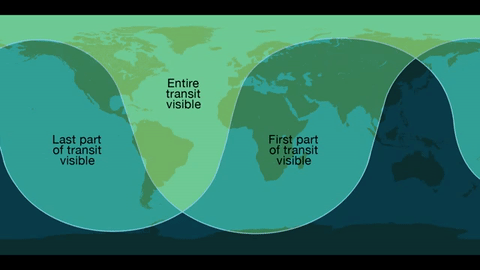
Where: Skywatchers in Western Europe, South America and eastern North America will be able to see the entirety of the transit. The entire 7.5-hour path across the sun will be visible across the Eastern U.S. – with magnification and proper solar filters – while those in the West can observe the transit in progress at sunrise.

Safety!
Unlike the 2012 Venus transit of the sun, Mercury is too small to be visible without magnification from a telescope or high-powered binoculars. Both must have safe solar filters made of specially-coated glass or Mylar; you can never look directly at the sun. We’re offering several avenues for the public to view the event without specialized and costly equipment, including images on NASA.gov, a one-hour NASA Television special, and social media coverage.

The Science…Why are Planetary Transits Important?
Transits like this allowed scientists in the 17th century to make the first estimates of Earth’s distance from the sun. Transit observations over the past few centuries have also helped scientists study everything from the atmosphere of Venus to the slight shifts in Mercury’s orbit that could only be explained by the theory of general relativity. Because we know Mercury’s size and location precisely, this transit will help scientists calibrate telescopes on solar observatories SDO, SOHO, and Hinode.

Transits can also teach us more about planets – both in and out of our solar system. The Venus transit in 2012 provided observations of the planet's atmosphere. Transits are also the main way we find planets outside the solar system, called exoplanets.

The transit method looks for a drop in the brightness of a star when a planet passes in front of it. This method will not find every planet – only those that happen to cross our line of sight from Earth to the star. But with enough sensitivity, the transit method through continuous monitoring is a great way to detect small, Earth-size planets, and has the advantage of giving us both the planet’s size (from the fraction of starlight blocked), as well as its orbit (from the period between transits). Our Kepler/K2 mission uses this method to find exoplanets, as will the Transiting Exoplanet Survey Satellites, or TESS, following its launch in 2017/2018.
We will stream a live program on NASA TV and the agency’s Facebook page from 10:30 to 11:30 a.m. -- an informal roundtable during which experts representing planetary, heliophysics and astrophysics will discuss the science behind the Mercury transit. Viewers can ask questions via Facebook and Twitter using #AskNASA.
Make sure to follow us on Tumblr for your regular dose of space: http://nasa.tumblr.com
How Well Do You Know Mercury?
Mercury is the smallest planet in our solar system and is only slightly larger than Earth’s moon. To give you some perspective, if the sun were as tall as a typical front door, Earth would be the size of a nickel and Mercury would be about as big as a green pea.

Mercury is the closest planet to the sun. Daytime temperatures can reach 430 degrees Celsius (800 degrees Fahrenheit) and drop to –180 degrees Celsius (-290 degrees Fahrenheit) at night.
Here are a few fun facts about Mercury:
Mercury takes only 88 Earth days to orbit the sun
If we could stand on Mercury’s surface when it is at its closest point to the sun, the sun would appear more than three times larger than it does here on Earth
Mercury is home to one of the largest impact basins in the solar system: the Caloris Basin. The diameter of this impact basin is the length of 16,404 football fields (minus the end zones) placed end to end!
Mercury is one of only two planets in our solar system that do not have moons (Venus is the other one)
Mercury completes three rotations for every two orbits around the sun. That means that if you wanted to stay up from sunrise to sunrise on Mercury, you’d be up for 176 Earth days…you’d need a LOT of coffee!

Two missions have visited Mercury:
Mariner 10 was the first mission to Mercury, and 30 years later, our MESSENGER mission was the second to visit the planet. Mariner 10 was also the first spacecraft to reach one planet by using the gravity of another planet (in this case, Venus) to alter its speed and trajectory.

MESSENGER was the first spacecraft to orbit Mercury, The spacecraft had its own shades to protect it from the light of the sun. This is important since sunlight on Mercury can be as much as 11 times brighter than it is here on Earth. The spacecraft was originally planned to orbit Mercury for one year, but exceeded expectations and worked for over four years capturing extensive data. On April 30, 2015, the spacecraft succumbed to the pull of solar gravity and impacted Mercury’s surface.
Water Ice?
The MESSENGER spacecraft observed compelling support for the long-held hypothesis that Mercury harbors abundant water ice and other frozen volatile materials in its permanently shadowed polar craters.

This radar image of Mercury’s north polar region. The areas shown in red were captured by MESSENGER, compared to the yellow deposits imaged by Earth-based radar. These areas are believed to consist of water ice.
Mercury Transit of the Sun
For more than seven hours on Monday, May 9, Mercury will be visible as a tiny black dot crossing the face of the sun. This rare event – which happens only slightly more than once a decade – is called a transit.

Where: Skywatchers in Western Europe, South America and eastern North America will be able to see the entirety of the transit. The entire 7.5-hour path across the sun will be visible across the Eastern U.S. – with magnification and proper solar filters – while those in the West can observe the transit in progress at sunrise.

Watch: We will stream a live program on NASA TV and the agency’s Facebook page from 10:30 to 11:30 a.m. – an informal roundtable during which experts representing planetary, heliophysics and astrophysics will discuss the science behind the Mercury transit. Viewers can ask questions via Facebook and Twitter using #AskNASA. Unlike the 2012 Venus transit of the sun, Mercury is too small to be visible without magnification from a telescope or high-powered binoculars. Both must have safe solar filters made of specially-coated glass or Mylar; you can never look directly at the sun.
To learn more about our solar system and the planets, visit: http://solarsystem.nasa.gov/
Make sure to follow us on Tumblr for your regular dose of space: http://nasa.tumblr.com
What’s Up for May 2016?

What's Up for May? Two huge solar system highlights: Mercury transits the sun and Mars is closer to Earth than it has been in 11 years.

On May 9, wake up early on the west coast or step out for coffee on the east coast to see our smallest planet cross the face of the sun. The transit will also be visible from most of South America, western Africa and western Europe.

A transit occurs when one astronomical body appears to move across the face of another as seen from Earth or from a spacecraft. But be safe! You'll need to view the sun and Mercury through a solar filter when looking through a telescope or when projecting the image of the solar disk onto a safe surface. Look a little south of the sun's Equator. It will take about 7 1/2 hours for the tiny planet's disk to cross the sun completely. Since Mercury is so tiny it will appear as a very small round speck, whether it's seen through a telescope or projected through a solar filter. The next Mercury transit will be Nov. 11, 2019.

Two other May highlights involve Mars. On May 22 Mars opposition occurs. That's when Mars, Earth and the sun all line up, with Earth directly in the middle.

Eight days later on May 30, Mars and Earth are nearest to each other in their orbits around the sun. Mars is over half a million miles closer to Earth at closest approach than at opposition. But you won't see much change in the diameter and brightness between these two dates. As Mars comes closer to Earth in its orbit, it appears larger and larger and brighter and brighter.

During this time Mars rises after the sun sets. The best time to see Mars at its brightest is when it is highest in the sky, around midnight in May and a little earlier in June.

Through a telescope you can make out some of the dark features on the planet, some of the lighter features and sometimes polar ice and dust storm-obscured areas showing very little detail.

After close approach, Earth sweeps past Mars quickly. So the planet appears large and bright for only a couple weeks.

But don't worry if you miss 2016's close approach. 2018's will be even better, as Mars' close approach will be, well, even closer.
You can find out about our #JourneytoMars missions at mars.nasa.gov, and you can learn about all of our missions at http://www.nasa.gov.
Make sure to follow us on Tumblr for your regular dose of space: http://nasa.tumblr.com
Solar System: 5 Things To Know This Week

This month you can catch a rare sight in the pre-dawn sky: five planets at once! If you look to the south (or to the north if you’re in the southern hemisphere) between about 5:30 and 6 a.m. local time you’ll see Mercury, Venus, Saturn, Mars and Jupiter lined up like jewels on a necklace. They’re beautiful in the sky, and even more fascinating when you look closely.
This week we’re taking a tour of the planets with recent information about each:
1. Artistic License

Craters on Mercury are named for writers and artists of all kinds. There are Tolstoy, Thoreau and Tolkien craters, for example, as well as those that bear the names of the Brontës, photographer Dorothea Lange and dancer Margot Fonteyn. See the complete roster of crater names HERE.
2. Lifting the Veil of Venus

A thick covering of clouds made Venus a mystery for most of human history. In recent decades, though, a fleet of robotic spacecraft has helped us peer past the veil and learn more about this world that is so like the Earth in some ways — and in some ways it’s near opposite.
3. Curious?

Have you ever wanted to drive the Mars Curiosity rover? You can take the controls using our Experience Curiosity simulation. Command a virtual rover as you explore the terrain in Gale Crater, all using real data and images from Mars. Try it out HERE.
4. Now That’s a Super Storm

Winter weather often makes headlines on Earth — but on Jupiter there’s a storm large enough to swallow our entire planet several times over. It’s been raging for at least three hundred years! Learn about the Great Red Spot HERE.
5. Ring Watcher

This week, the Cassini spacecraft will be making high-resolution observations of Saturn’s entrancing rings. This is a simulated look at Saturn, along with actual photos of the rings from the Cassini mission.
Want to learn more? Read our full list of the 10 things to know this week about the solar system HERE.
Make sure to follow us on Tumblr for your regular dose of space: http://nasa.tumblr.com
How Well Do You Know Your Space Photos?
Can you guess the subject of each of these pictures? How many will you get right? Test your friends and family to see who knows their space photos the best.
1. Ice on Earth or a Picture of Mars?

2. Dry Land on Earth or a Close-Up of Jupiter?

3. Mercury or Our Moon?

4. Do You Think This is Mars or Our Home Planet?

5. Waves on Jupiter or Saturn?

6. Is this a picture of Mars or Earth?

7. Can You Tell Which is Europa and Which is the Bottom of a Frying Pan?

8. Close-Up of Our Moon or Dwarf Planet Ceres?

9. A Weird World or Our Own World?

10. The Red Planet or a Red Desert?

Answers
1. Mars. You might be surprised, but this image taken by our Mars Reconnaissance Orbiter is of a light-toned deposit on the Martian surface. Some shapes in the terrain suggest erosion by a fluid moving north to south.
2. Earth. This image taken by our Earth Observing-1 satellite shows Lake Frome in central Australia. In this image, the salt lake appears bone-dry, filled with off-white sediment. This area of Australia receives 149 to 216 millimeters of rainfall a year on average, and the basins pass most of their time as saltpans.
3. Mercury. Our MESSENGER spacecraft captured this image of Mercury during a fly by in October 2008. It shows previously uncharted regions of the planet that have large craters with an internal smoothness similar to Earth’s own moon. It is thought that these craters were to have been flooded by lava flows that are old but not as old as the surrounding more highly cratered surface.
4. Earth. Surprisingly, this image take from the International Space Station shows the western half of the Arabian peninsula in Saudi Arabia. It not only contains large expanses of sand and gravel, but extensive lava fields known as haraat.
5. Saturn. Although this pattern of waves is similar to those seen on Jupiter, this is actually a picture of Saturn. The pattern of an iconic surfer’s wave, has been observed in many places all over the universe, including at the edges of Earth’s magnetic environment.
6. Mars. This image was taken by our Mars Reconnaissance Orbiter and shows dunes of sand-sized materials that have been trapped on the floors of many Martian craters. The dunes are linear, thought to be due to shifting wind directions.
7. Left: Europa. Right: Frying Pan. Europa is one of Jupiter’s moons, and is about the same size as Earth’s moon.
8. Ceres. This image taken by our Dawn spacecraft shows an intriguing mountain on dwarf planet Ceres protruding from a relatively smooth area.
9. Earth. This image of the Bazman volcano is located in a remote region of souther Iran. While the volcano has the classic cone shape of a stratovolcano, it is also heavily dissected by channels that extend downwards from the summit.
10. Earth. This image of the Great Sandy Desert in northwest Australia shows a variety of dune forms across the region. The photo was taken by the Expedition 35 crew from the International Space Station.
Make sure to follow us on Tumblr for your regular dose of space:http://nasa.tumblr.com


